Today, submarine-launched ballistic missiles form the backbone of the great power's nuclear deterrents. Nuclear submarines loaded with long-range weapons prowl below the waves, almost undetectable and ready to strike back, even if the homeland is destroyed. But while this state of affairs seems normal today, getting here required overcoming formidable challenges. Creating a land-based ballistic missile was difficult enough, but to take the system to sea opened up a whole new set of challenges.
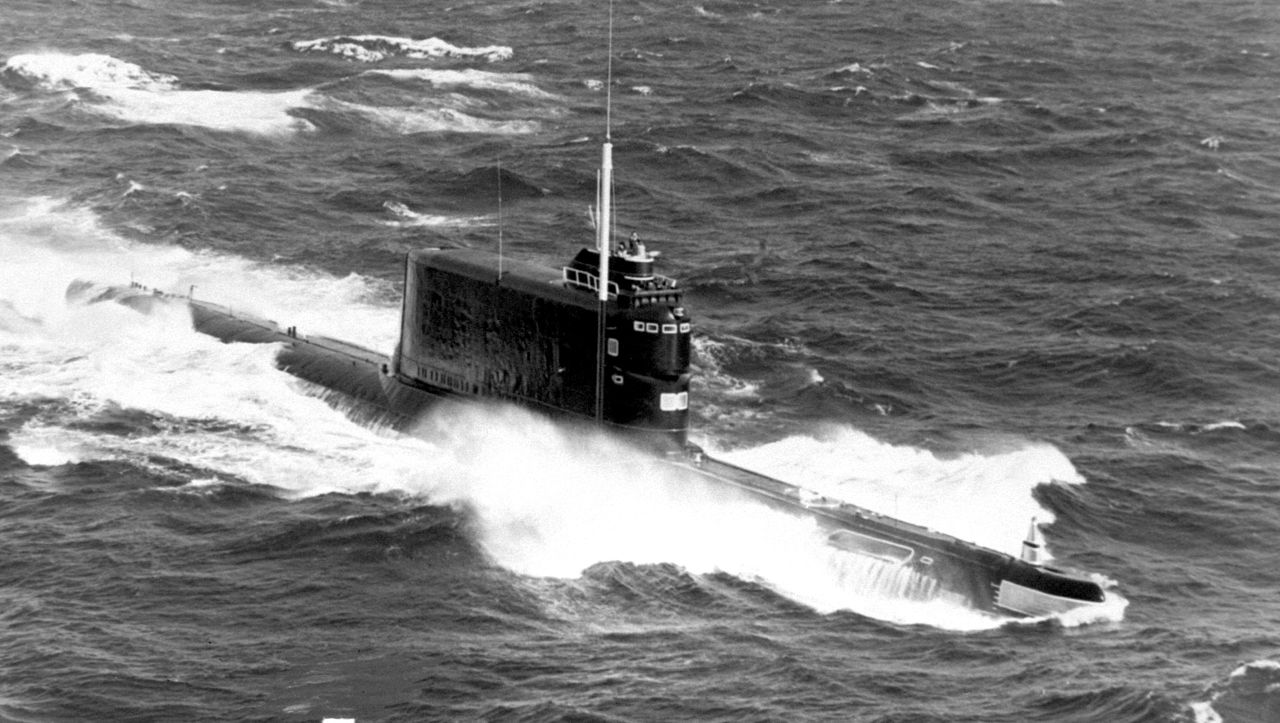
A Soviet Golf class ballistic missile submarine
The biggest of these is guidance. Because ballistic missiles are fired at targets hundreds or thousands of miles away, the submarine needs to be able to locate itself precisely at all times, without giving away its position. Any inaccuracies in position translate directly to errors in the missile's point of impact. The missile itself is also a complex machine loaded with explosives and dangerous fuel, and the submarine needs to be able to support it and then launch it if the time comes. Launch is made more difficult by the fact that the platform is rolling, pitching, and probably underwater. But all of these problems were overcome in the late 50s and early 60s, and for the last half-century, SLBMs have been a leading guarantor of peace.
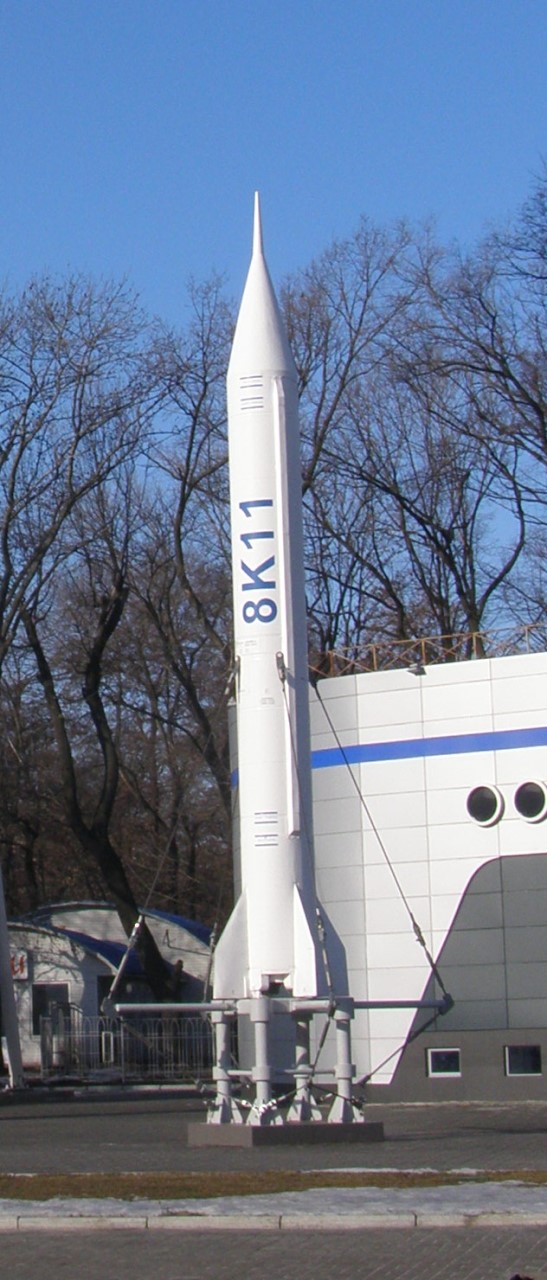
The R-11, the world's first submarine-launched ballistic missile
The first power to look seriously at SLBMs was, predictably, Nazi Germany. Thankfully, Nazi resource planners could never overlook an unworkable waste of time and material, and so, as the Allies overran V-2 launch sites, the Germans began to investigate alternate launch methods. After all, they had to carry on their wasteful and ineffective campaign against Britain somehow. The solution that they hit on was to build a giant canister capable of carrying and launching a V-2, towed into firing position behind a submarine. Besides the missile itself, the 500-ton canister would also hold fuel, servicing equipment, and a launch crew of up to 10, who had a small living space. In theory, a submarine could tow up to three canisters across the North Sea, turn them upright (I have no clue how the crew would cope with the transition) and bring them to the surface for launch. Taking the canisters even further afield was discussed, with New York a popular target for the strikes. Three canisters were mostly complete when the war ended, but none were near operational, a good example of Germany's inability to set reasonable priorities even in the last days of the war.
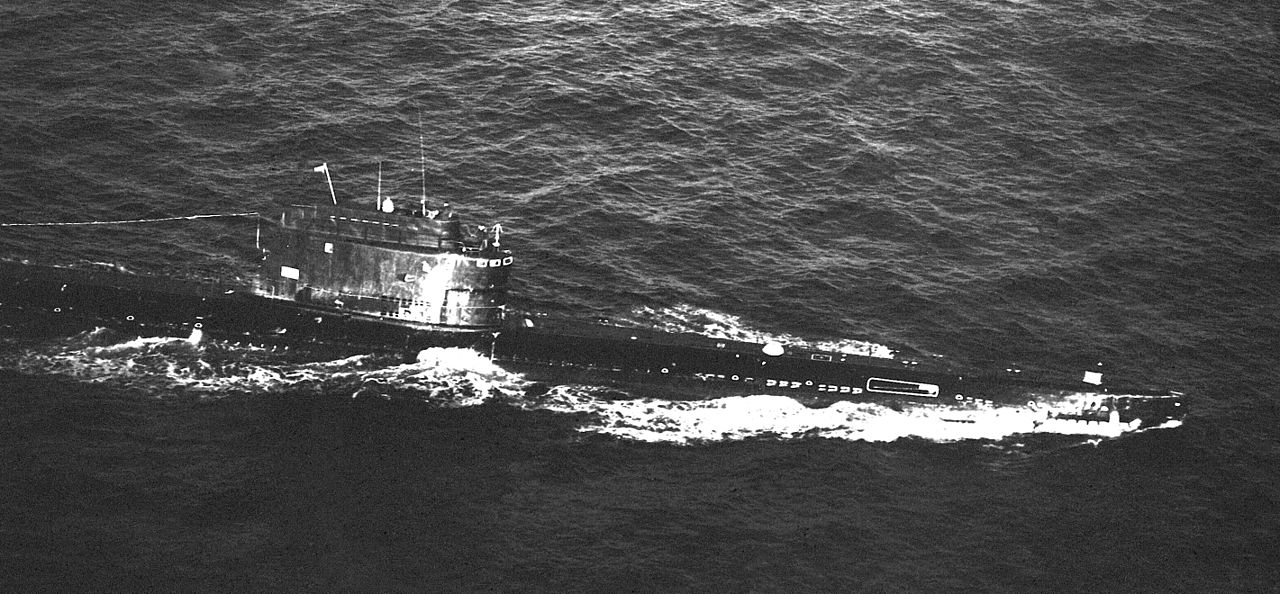
A Zulu class SSB conversion
The development of nuclear weapons meant that ballistic missiles became practical weapons instead of the playthings of a country that has no idea how to tell its scientists no. While the first generation of weapons were too heavy for missiles, by the mid-50s, the same developments that made it possible for fighter-sized aircraft to use nuclear weapons also made nuclear-tipped missiles practical. Both sides of the Cold War moved to capitalize on German research, resulting first in a series of short-range weapons like the Corporal and Scud. The latter missile was the first to go to sea, when the Soviets installed a single R-11FM on a Zulu class diesel submarine. The first test launch was made on September 16th, 1955 while the submarine was on the surface, and soon it was joined by five more Zulus fitted with a pair of Scuds each. The R-11FM, powered by kerosene and nitric acid, had a range of only 80 miles or so, which obviously limited its operational potential, but it was available and gave valuable operational experience.

A Golf class SSB
This was put to work in the development of a dedicated diesel ballistic missile submarine, known to NATO as the Golf class. Because of how large the missiles were relative to the submarine, three tubes were built into the sail, giving it a distinctive silhouette. When it was time to launch, the submarine would surface, and each missile would be raised out of its tube before firing, the whole process taking about 90 minutes. The missiles themselves were initially R-11FMs, but they were soon replaced by R-13s (SS-N-4s), which could reach a more useful range of 350 miles. The Soviets appeared to like the Golfs, building 22 of their own, plus two more in sections for the Chinese. Only one of these was actually assembled, and while the Soviet boats have all been scrapped, the Chinese Golf is probably still used as a test platform for their SLBMs. They also investigated turning the SSBs into SSBNs, developing a small nuclear-electric generator that would feed into the batteries, allowing them to be recharged without the need to snorkel. None were ever installed, which saved all sorts of classification headaches.
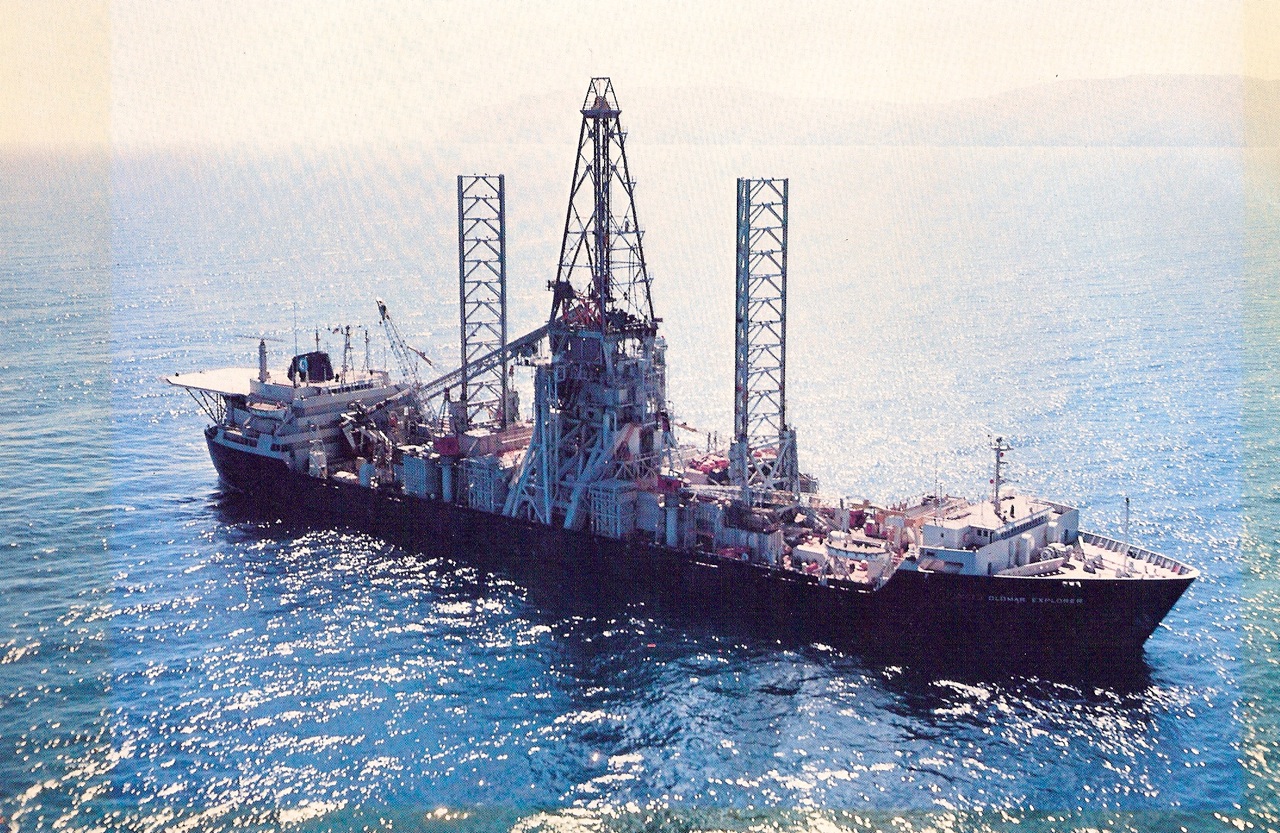
Glomar Explorer
The Golf class is most famous for the loss of one of its members, K-129, in 1968. While on patrol north of Midway Atoll, an internal explosion sent her to the bottom with all hands. After noticing the Soviet search effort, the US was able to locate the site of the explosion using SOSUS data and find the wreck using the converted Regulus submarine Halibut. As there were three SLBMs onboard, it was a tempting target, but Navy plans to recover a few key parts with unmanned vehicles were pushed aside in favor of a CIA plan to build a specialized ship that would use a giant claw to reach down and grab the submarine, then lift it to the surface intact for examination. Famous billionaire and recluse Howard Hughes would provide cover, claiming the ship was intended to mine manganese nodules off the ocean floor. The plan was not particularly successful, as K-129 broke while being lifted, and it is believed that only the forward third of the submarine was recovered. This included two nuclear torpedoes and various cryptographic equipment, but not the SLBMs. Six bodies were also found, and the Americans buried them at sea.

A Hotel class SSBN
The Golfs were probably intended as theater nuclear platforms, striking targets in Europe and the Pacific basin, but leaving the continental US to ICBMs and later SLBMs. But the extended period on the surface left them vulnerable, and in the late 50s, the Soviets began to work on a new missile that could be launched from 130' underwater. The resulting R-21 also had twice the range of the R-13, while carrying the same 1 MT warhead, and from the early 60s, it was swiftly refitted to most of the Golfs, which remained in service until the massive drawdown of Soviet forces in 1989, with some being used as test platforms for later SLBMs. To bolster these, the Soviets mated the basic armament of the Golf with the nuclear propulsion system of the November class SSNs to create the 8-strong Hotel class SSBNs. This propulsion plant was not particularly successful, and the first boat, K-19, suffered a horrific nuclear accident in 1961, after less than a year in service. Her crew managed to prevent a meltdown at the cost of 8 lives within a month, and 14 more within two years. She was repaired, with the reactors disposed of at sea, and gained the nickname "Hiroshima". A decade later, another fire caused serious damage, but she was again returned to service.
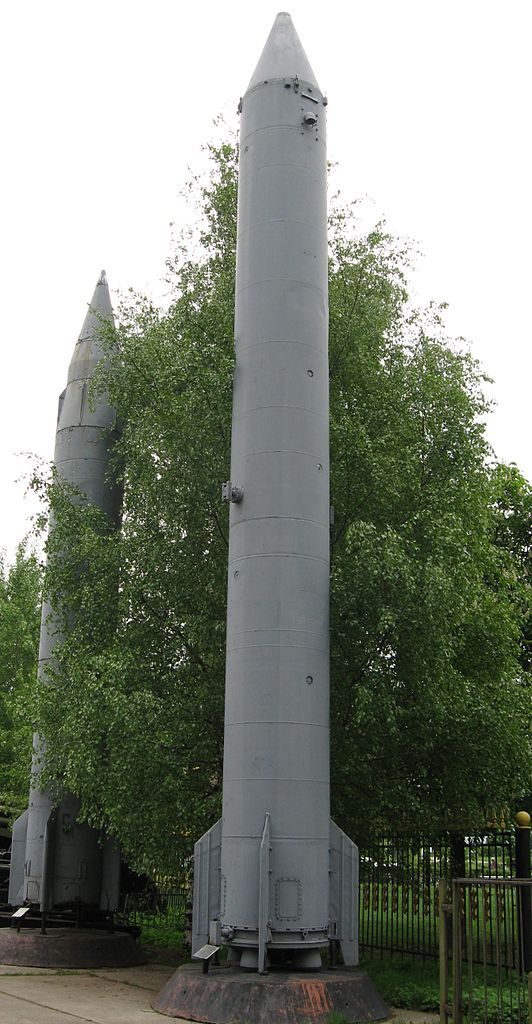
R-21 (front) and R-13 (rear) missiles
But K-19 was not the first SSBN to go to sea. A year before she commissioned, another vessel had entered service on the other side of the Atlantic, which had spawned a vastly more successful line of missile submarines. The boat was the USS George Washington and the missile she carried was called Polaris. We'll look at how she came to be next time.

Comments
On the fate of the Russian Golfs: Ten of them wound up at a scrapyard in North Korea in the 1990s, coincidentally about the same time the North Koreans acquired detailed technical information on the R-27 submarine-launched ballistic missile used by some of the later Golfs. And maybe ~150 actual missiles; Yeltsin-era Russian inventory control left a lot to be desired.
The Golfs were truly scrap; they're not going to sea again. But North Korean engineers presumably looked them over for hints on how to build an SSB, and it looks like their home-grown SSBs owe a lot to the Golf concept - based on the "Romeo" hull design rather than the more advanced "Foxtrot" that turned into the Golf, because North Korea never got any Foxtrots, with 3-4 missile tubes in the sail. As with the Golf, it's almost certainly a theater platform rather than something intended to strike directly at the United States.
The R-27 missiles, if they actually made it to North Korea, had spent far too much time in warehouses or boneyards. The DPRK fielded a stretched variant as a land-based IRBM for many years, but when they finally got around to testing it the thing worked maybe once in 6-8 tries and hasn't been seen since. They played around with a shorter but similar design in their early SLBM trials, before figuring out that liquid-fuel SLBMs are a crappy idea all around and may have damaged their prototype SSB in a launch attempt.
The solid-fuel missile they developed to replace it is the "Pukguksong-1", which translates to "Polaris 1". Possibly that is a deliberate tweak of some American noses.
The Glorious Democratic People's Republic of Korea marches proudly into the 1960s with its state-of-the-art nuclear weaponry :-)
Interesting. Thanks for that.
Also, would you be interested in contributing a Nuclear Weapons at Sea on North Korea?
Couple of basic things I've always been curious about.
How calm is the ocean a hundred or so feet down? Are you still getting the effects of swells that low, or just gentle currents?
Also, is it possible for a missile to breach the surface in heavy seas? You only see tests in calm weather.
At periscope depth (~20 m), it can get pretty rough, although that depth is to the keel, and a lot of the sub is closer to the surface. Further down, it gets quite calm, although I don't know the exact values. I also don't know offhand what the weather/sea state limitations for SSBNs are. Didn't come up in any of the research I did for this or the Polaris posts.
weather/sea state limitations for SSBNs sounds like the sort of thing that any military would want to keep classified.
Even if there were published values I wouldn't trust them.
The Norks seriously named their FBM North Pole Star-1??? Wow. It even looks like a Polaris, with the single warhead and everything. This cannot have been anything but intentional.
Ah, the Glomar Explorer. Famous for leading to the "Glomar response" when a reporter filed a FOIA request for information on it. "We can neither confirm nor deny that we have information relevant to your request, but if such records did exist, they would be classified." When you want to give up as little information as possible, accept no substitutes.
I wonder whether the designers of the FLIP research platform were aware of this project. Apparently the crew of FLIP spend the 30 minutes of the transition on deck, stepping from the deck/bulkhead to the bulkhead/deck at the right moment...
The Soviets seem to have got liquid fueled SLBMs to work pretty well.
Admittedly they didn't have the solid rocket technology to do otherwise and would eventually decide that the Chief Designer was right about hypergolics but that would take until after there was no Soviet Union.
The North Korean Polaris is a pretty good match for the American Polaris A1 in size, performance, and general design concept. But then it's also a pretty good match for the Chinese JL-1 or the French M1. There's a pretty obvious way to build your first SLBM, once you rule out liquid propellants, and it points to a two-stage solid-propellant missile of ~9 meters OAL, ~1.5 meter diameter, ~1500 km range, and a single warhead in a triconic reentry vehicle. The North Koreans don't have anything bigger than ~200 kT in the warhead department, so their Polaris will come up short of ours in that department.
The name, yeah, that's probably deliberate.
And I'll have to decline the invitation to write a top-level post on this one; my employer officially frowns on that sort of thing, and an occasional blog comment is as far as I can go.
Sorry to hear that, but it makes sense. I'll probably work it into a later SLBM post, as I'll get around to Russia and France at some point.
In reading the Wikipedia article on submarine K-19, in the section about the nuclear accident are these two sentences: "The control rods were automatically inserted by the emergency SCRAM system, but the reactor temperature rose uncontrollably. Decay heat from fission products produced during normal operation eventually heated the reactor to 800 °C (1,470 °F)."
This puzzles me. If the control rods were inserted, why did the temperature continue to rise? Were they perhaps damaged and therefore the insertion did not go correctly?
No, the control rods were inserted correctly. A nuclear reactor is a bit more complicated than just "neutron splits uranium and produces heat". The bits left over are usually very radioactive (short half-life), and a significant amount of the heat produced actually comes from those products decaying. When the reactor is in steady state, this isn't a problem because it's been worked into the calculations, but if you lose coolant, then shutting down the reactor only gains you so much because you still have to deal with the decay heat from the fission byproducts. (And yes, this is exactly what caused problems at Fukushima.)
With PWRs if you lose coolant the reactor will shut down by itself but the decay heat is still going to cause you serious problems.
Which is of course why the reactors on K-19 were designed with an emergency core cooling system, had it been installed they'd have had to shut down that reactor but probably wouldn't have had a disaster (inspecting welds to the same standard as the US Navy likely would've prevented it as well).